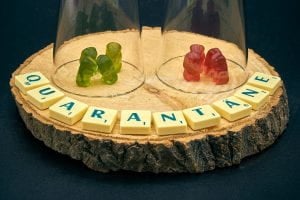A relaxing day yesterday, just watching a few sessions as I know I will be able to view most of them over the next year. So now to start day 2 at 10am my time in Tasmania.
Went to the Main Stage but all sessions had finished already. Then looked at the live sessions for today and have already missed 9 out of the 10 I wanted to see. Glad these will be recorded so I can watch later on.
So looks like my plan for today is to look at some series and other sessions I have ticked and added to my playlist. I have also been watching twitter to see what other sessions are being recommended by other genealogists I follow.

Is Everyone Here by Jana Greenalgh
Loved the introduction to this series. Common saying by mums of large families “Is everyone here?” Jana suggests ways to fill in those gaps in your family tree where you might have found some children but maybe not all of them. This is mainly for English families.
- An individual’s story includes all their relationships.
- Search broad family including step families.
- Check out signatures on records.
- Prior to 1900 families were generally big. Demographic statistics for population and infant mortality found here.
- Before 1900 most married women had children every 1-3 years so check your tree for gaps that might show children missing
- Ask questions about why there might be a gap – change church, dad in gaol, dad a mariner, stillbirth etc
Find your family in every census
- Keep a spreadsheet or chart from 1841-1921 and mark off relevant censuses you find each member of the family in
- Remember children grow and leave home or are apprentices or servants in other homes of get married
- If not in a census, maybe emigration
- Also use 1939 register
- In 1911 census , you find how many children a woman had – how many alive and how many dead
Use civil registration records to help fill gaps
- Use indexes on GRO website gives more info than other indexes on Ancestry etc – register for free and order certificates from here as well
- Use birth and death indexes – good for those children who died young
Church records mainly Church of England prior to 1837 when civil registration began
- From mid 1500s, two copies of christenings, marriages and burials are found in parish registers or Bishops transcripts
- Inscriptions on gravestones, where they are buried, maybe other members buried nearby
- If you can find the images, it can be better than indexes – they often have extra information in margins
- Also look in neighbouring parishes and towns
- In small towns, create lists with same surname – often they are related
Probate records
- Wills, admons (didn’t leave a will), estate duty
- From 1858, check at gov.uk or in Ancestry
- Before 1858, you need to check county probate records which can be found on family search wiki – findmypast and the genealogist also have the images
- In small town keep record of all with same surname

Escaping the Famine – Irish settlement in Canada by Melanie McComb @ShamrockGen
This session really interested me as those readers who follow my blog, know of my frustrations with my Irish Jackson family. After three members of the family, William senior, William Junior and Rebecca as well as another relative Jane Steel, were sentenced to transportation, another member of the family Anne Jackson, who had dobbed them in for stealing, asked for help to get away from Ireland.
While I was travelling in Ireland I did some research on Anne and found her with two other children Mary Ann and Robert going to Canada on the recommendation of the magistrate who had sentenced the Jacksons.
Melanie’s session included the history of Irish Immigration to Canada and many of the reasons why this happened. She also discusses the voyages across the Atlantic from Ireland to Canada. Once in Canadian waters, there was quarantine to go through at various points along the coast.
Before 1865, no formal passenger lists but some shipping companies kept lists. This is where I found Ann and her children on the J.J.Cooke list arriving on the ship Superior in 1847. These records are now on Ancestry.
Melanie also mentions a collection of records coming into New England through the Port of Saint John, New Brunswick for the years 1841-1849. It includes more than just immigration records.
Grosse Ile quarantine station has a database that can be checked through the Libraries and Archives of Canada. Another database they have is for any immigrants prior to 1865.
Melanie then went into other ways to build your Irish family in Canada:
- Using census to looking for parent(s) born in Ireland but children born in Canada. Different information found in each census will help you work out when someone came to Canada and maybe where they came from in Ireland.
- Church records – some found online, others still on microfilm and found in registers at particular churches.
- Land records also might help build your family tree in Canada – province level first then county level
- Newspapers also give lots of information including goods belonging to dead people and how to claim them. Also check out obituaries and articles in area near where your Irish family settled.
- Gravestones might also have town and parish in Ireland mentioned on them.
Readers: What was your takeaway from day 2 at RootsTech 2022?

